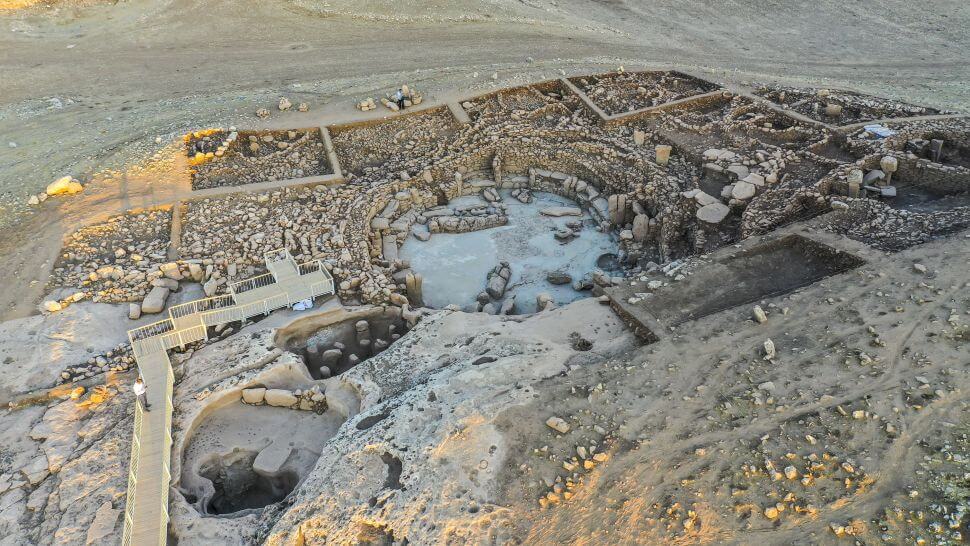
Human Head Carvings & Phallus-Shaped Pillars Discovered At 11,000-Year-Old Site In Turkey
11,000 years ago, folks in Turkey spent their days carving human heads and phallus-shaped pillars. But why?
By: Owen Jarus | Live Science
Archaeologists in Turkey have found evidence that an 11,000-year-old prehistoric site was used for a ceremonial parade through a building containing phallus-shaped pillars and a carving of a human head.
Called Karahantepe, the site is located in southern Turkey, east of Şanlıurfa, and has a series of buildings that date back to long before writing was invented. Within the remains of the buildings, archaeologists found carvings of human heads, snakes and a fox, as well as several interestingly shaped pillars.
For instance, the archaeologists discovered 11 pillars near a carving of a human head. “All pillars are erected and shaped like a phallus,” Necmi Karul, a professor of prehistoric archaeology at Istanbul University, wrote in a paper recently published in the journal Türk Arkeoloji ve Etnografya Dergisi.

In the journal article, Karul did not speculate as to why the heads and phallus-shaped pillars were built or what meaning they may have had.
This building is connected to three others to form a complex of sorts. Ancient people may have held a ceremonial parade through this complex, Karul said. Current evidence suggests that people used the complex for “a ceremonial process, entering the building from one end and exiting at the other end, having to parade in [the] presence of the human head” and the phallus-shaped pillars, Karul wrote in the journal article.
More excavation and analysis will need to be done before archaeologists can say for certain that this parade took place, Karul wrote.
Monster In The Village: Petar Blagojevic, The Vampire of Kisiljevo
Rather than being abandoned, the buildings were filled in with dirt, possibly during a decommissioning ceremony of sorts.
The site dates to a similar time as Gobekli Tepe, another archaeological site that has large buildings and carvings of animals and human heads. Gobekli Tepe is also located near Şanlıurfa, and archaeologists are trying to determine the relationship between the two sites.
Although Karahantepe was discovered in 1997, excavations didn’t start until 2019. Between those years, researchers completed several archaeological surveys of the site. Karul did not reply to requests for comment.
* * *
NEXT UP!
NASA Shut Down Live Steam After Detecting Something Terrifying Infiltrated Our Solar System
In the vast expanse of space, where the mysteries of the cosmos endlessly unfold, the vigilant eyes of NASA’s scientists and astronomers constantly scan the heavens. Their telescopes and probes tirelessly observe the depths of our solar system, seeking to unravel its secrets and understand the phenomena that occur within it.
However, on a fateful day, amidst routine surveillance, something ominous and enigmatic was detected, triggering a response that sent shockwaves through the scientific community and beyond.
As NASA’s live stream broadcasted the mesmerizing vistas of our celestial neighbourhood, viewers around the globe were suddenly met with an unexpected announcement: the feed was abruptly shut down. Speculation ran rampant as to the cause, with rumours swirling of an unprecedented discovery that had sent NASA into a frenzy of activity.
* * *
READ MORE: Is This How Aliens Could Rule The Universe?
Interesting! Massive Objects Detected By SpaceX & Elon Musk Shocking Comment On UFO Shootings By US
Telegram: Stay connected and get the latest updates by following us on Telegram!
We’d love to hear from you! If you have a comment about this article or if you have a tip for a future Collective Spark Story please let us know below in the comment section.
